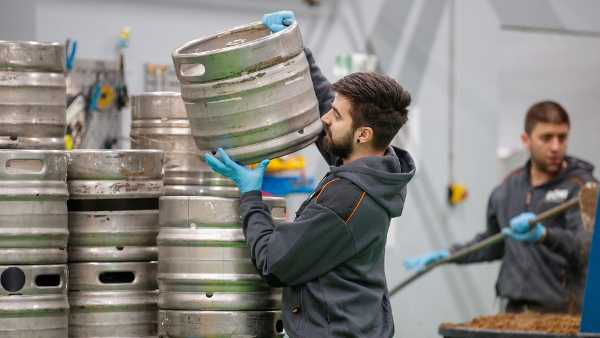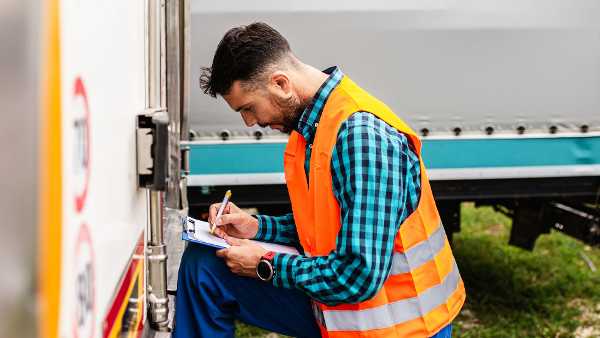ATA carnet for temporary exports

- Marco van Hagen
- Background
- Edited 2 October 2025
- 5 min
- Managing and growing
- International
You use an ATA carnet when you want to take trade samples, exhibition materials or other professional materials to a country outside the EU and back again. This also includes equipment needed for a stand at a trade fair. With an ATA carnet, you will not have to pay import duties or VAT. This article explains what the ATA carnet is and how to apply for and use it. And how to import and export goods temporarily if you cannot use an ATA carnet.
An ATA carnet allows you to declare goods to customs authorities quickly and easily. It covers both the export declaration in the Netherlands and the import declaration in the destination country. And the re-export and re-import steps on the return journey. You apply for the ATA carnet in the Netherlands from KVK.
When can you use an ATA carnet?
Approximately 80 countries accept the ATA carnet. This is set out in the ATA . This convention also specifies the purposes for which you may temporarily import goods using this document. You use an ATA carnet for:
- Samples and promotional materials, to demonstrate or show examples of your product to foreign business contacts.
- Exhibition materials, to take part in international trade fairs, exhibitions, sporting events or conferences.
- Professional equipment that is required to carry out work locally. For example, photographic or video equipment, musical instruments, stage and theatre equipment. Tools for maintenance, repair and service work are also included in this category.
Some countries do not accept an ATA carnet or only for a partial use. Find out which countries these are in the KVK ATA carnet country (in Dutch).
You do not sell the goods you take with you. You bring them back to the Netherlands. They are only to support you in closing a deal, or in carrying out work locally. It makes no difference of you transport the goods yourself or a transport company arranges this. Learn more in the ‘ATA Carnet User Guide’ (PDF, in Dutch).
How to apply for an ATA carnet
An ATA carnet is a physical document. To apply for one, you need an account with (in Dutch). Once you have created your account and KVK has approved it, you can start your ATA carnet application. To help you prepare for the digital application, please also see the following documents:
- KVK ATA-Nederland Instruction Manual (PDF, in Dutch)
- KVK ATA Quick Reference Sheet (PDF, in Dutch)
Once your application is complete, KVK will prepare the ATA carnet. You will receive the document by registered mail within 3 to 5 working days.
Validation
Before you cross the border with an ATA carnet, Dutch validates the document. Customs checks the goods and then puts a stamp and signature on the carnet. This is mandatory. With an invalid ATA carnet, Customs in the destination country will refuse your goods.
ATA carnet application costs
You will find the costs for applying for an ATA carnet in the tariff overview. On top of that, you must also pay a premium based on the value of the goods you are taking with you. KVK will issue an invoice for the entire amount. Before you apply for an ATA carnet, please ask about the costs for your goods. Contact the ATA team by email or by calling 088 585 1884.
Validity of the ATA carnet
An ATA carnet is valid for 1 year after it is issued by the KVK. Please note: the destination country may demand that the goods leave the country within that year, even if the ATA carnet itself is still valid.
How does an ATA carnet work in practice?
A working example: you make machinery and want to visit a trade show in Bosnia-Herzegovina. You will take machines and other materials for your stand. After the trade show, you will take everything back to the Netherlands. Because the goods are only going to be staying in Bosnia-Herzegovina temporarily, and you have a valid ATA carnet, you do not have to pay import costs or VAT.
The ATA carnet consists of several pages that are intended for customs authorities at each stage of the trip. For example:
- An export stamp at the customs authority where the goods leave the EU.
- An import stamp from the Bosnian customs authority where the goods enter Bosnia-Herzegovina.
- A re-export stamp from the Bosnian customs authority where the goods leave Bosnia-Herzegovina.
- A re-import stamp at the customs authority where the goods re-enter the EU.
The completed pages in the ATA carnet show where and on what date the goods were checked by customs officers. In this way, you can always show where the goods have travelled to or through before they return to the EU. The person transporting the goods must give the ATA carnet to each customs authority to be checked.
The re-export page, with the stamp and signature of the Bosnian customs authority, is an important proof of the re-export of the machines and the materials for your stand from Bosnia-Herzegovina. This means you do not have to pay import duties and VAT to the Bosnian customs authority in retrospect.
International transit
If the goods are being transported to Bosnia-Herzegovina by truck via Serbia, for example, there will also be transit pages included in the ATA carnet. These are intended for the two additional customs points, entering and leaving Serbia.
Tip: always ensure the customs authorities can easily identify the goods you are importing with an ATA carnet. Provide a clear description of the goods and mention any brand markings, product numbers, and serial numbers.
Return the ATA carnet after it has been used
After the ATA carnet has been used, you must return it to KVK. This is mandatory. Return the ATA carnet by registered post to:
KVK, t.a.v. Afdeling Carnets, Postbus 2852, 1000 CW Amsterdam
You also do this when the validity period of the ATA carnet is over. You are obliged to do this, because after the expiry date, KVK will check if you have used the ATA carnet according to the guidelines. KVK keeps the ATA carnet.
Without an ATA carnet
You cannot always use an ATA carnet. For example, if the destination country is not a member of the ATA Convention. Or if the destination country does not accept an ATA carnet for your purpose of use. You can check this in the KVK Overview of ATA Carnet countries (in Dutch). In such cases, you can make use of the ‘temporary import without ATA carnet’ procedure. The Netherlands Enterprise Agency’s ‘countries ’ (in Dutch) gives information per country on how to arrange temporary imports.
Before departure, plan extra time for customs procedures. And reserve money for foreign customs. They want to make sure they get import duties and VAT. Just in case you do import the goods you brought and do not take them back with you. You either advance this amount or pay it as a deposit. Without an ATA carnet, you are a personal guarantor. You get the deposit back when you take all the goods out of the country again.
How does it work?
You can arrange temporary export in the Netherlands and temporary import in the destination country without an ATA carnet. Follow these steps before departure and upon return:
- Before departure
Lodge an export declaration at Dutch Customs. Provide a clear list of goods, including brand markings, product and serial numbers. At airports, tell the customs officer what products you want to export. If you take items in the hold of the plane, you make an electronic declaration. The same goes if you travel by boat, truck, or train. You can hire a logistics service provider such as a forwarder to do this on your behalf. - Upon your return
Tell Dutch Customs that the goods are ‘Terugkerende ’ (returning goods, in Dutch). You will not have to pay import duties, VAT or excise duties. An important condition is that the same goods must be returned within 3 years, in the same condition. As proof of this, you must show the original export declaration.


